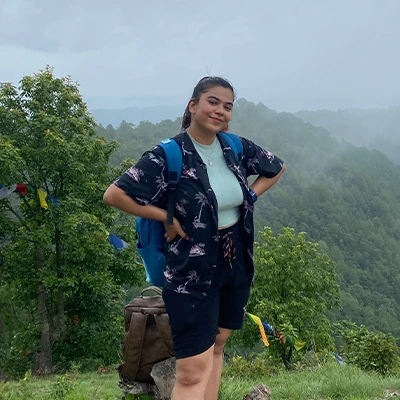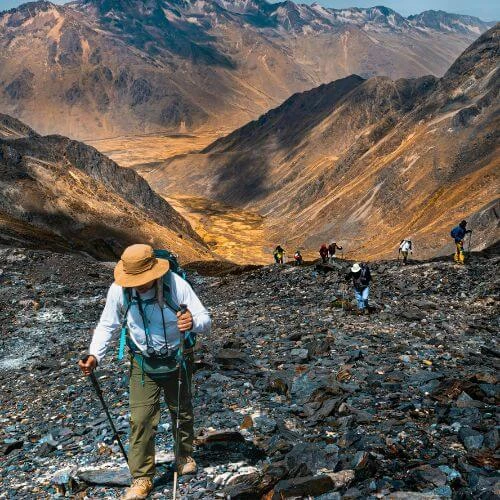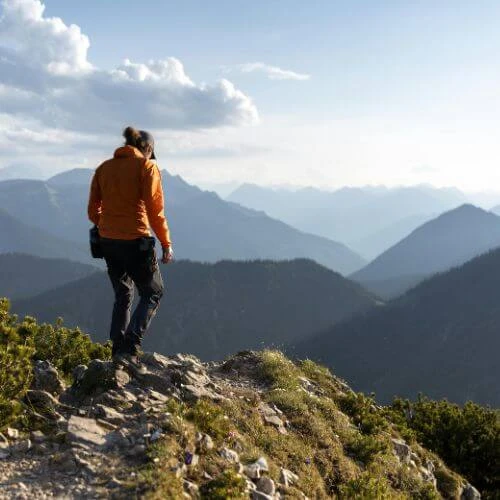Heading to the Everest region? Get ready for the adventure of a lifetime! But before you lace up your boots. Honestly, what you pack for Everest Base Camp really does matter. This isn’t the kind of trip you can just throw together the night before.
The trail takes you through tough, high-altitude terrain, and the weather can flip in no time. Packing smart means you’ll stay warm, feel good, and avoid a whole lot of unnecessary stress along the way. With the right gear, the trek feels like the adventure of a lifetime instead of a rough uphill battle.
At Abound Holidays, we’ve helped countless trekkers reach Everest Base Camp. We know exactly what works and what doesn’t. In this guide, we’ll walk you through every must-have item so you don’t overpack or forget something important. Whether you're a first-time trekker or returning for another Himalayan experience, this guide has got you covered.
What to Pack for the Everest Base Camp Trek by Seasons?
Different seasons bring different challenges. Spring (March-May) and Autumn (Sept-Nov) are the best trekking seasons (for more details on best time for everest base camp trek, click here). Spring can be warmer in the day but still cold at night, while autumn is cooler and drier. Winter trekking? Be ready for snow and sub-zero temperatures.
Make sure to:
- Pack a four-season sleeping bag (comfort rated to -10°C or lower)
- Use a layering system to adapt to changing temps
- Carry a windproof, waterproof shell
- Include sun protection year-round

Seasonal Packing Guide for the Everest Base Camp Trek
Item | Spring (March–May) | Autumn (Sept–Nov) | Winter (Dec–Feb) |
Base Layers | Lightweight moisture-wicking | Lightweight moisture-wicking | Thermal, heavyweight base layers |
Mid Layers | Fleece or insulated jacket | Fleece or insulated jacket | Thick fleece or down jacket |
Outer Layer (Jacket) | Waterproof, breathable shell | Waterproof, breathable shell | Heavy, insulated, windproof jacket |
Pants | Quick-dry trekking pants | Quick-dry trekking pants | Insulated trekking pants |
Sleeping Bag | 3-season, rated to -10°C | 3-season, rated to -15°C | 4-season, rated to -20°C |
Gloves & Hat | Light gloves and a beanie | Warm gloves and a wool hat | Heavy gloves and a thermal hat |
Footwear | Waterproof hiking boots | Waterproof hiking boots | Insulated hiking boots |
Accessories | Sunglasses, sunblock | Sunglasses, sunblock | Sunglasses, sunscreen, and a balaclava |
Note: For some trekkers, the EBC trek has been difficult. If you want to know about
the difficulty of the Everest base camp trek, visit our blog Page "difficulty of Everest base camp trek."
What Clothing Is Essential for the Everest Base Camp Trek?
Layering is key. You need to dress for sun, wind, snow, and everything in between. The right clothing for the Everest Base Camp trek keeps you warm at night and cool during intense uphill climbs.
Clothing Essentials Include:
- 2-3 moisture-wicking base layers (tops and bottoms)
- 1-2 fleece or insulated mid-layers
- Waterproof jacket and pants
- Warm hat, gloves, and neck gaiter
- Quick-dry trekking pants
- Comfortable hiking socks (wool or synthetic)
- Down jacket (compact but warm)
What Are the Everest Base Camp Essentials?
Packing smart also means thinking ahead. You’ll be trekking in remote areas where buying items is expensive or impossible. These Everest Base Camp essentials will keep you clean, healthy, and safe.
Toiletries & First Aid:
- Personal toiletries (toothbrush, toothpaste, biodegradable soap)
- Wet wipes and hand sanitizer
- Sunscreen and lip balm (high SPF)
- Basic first aid kit (band-aids, antiseptic, altitude pills)
- Toilet paper and a zip-lock bag for waste
- Water purification tablets or a filter
What Is the Everest Base Camp Gear Checklist for Every Trekker?
Your gear can make or break your experience. You don’t need to carry everything—just the right things. A well-planned Everest Base Camp gear checklist helps you stay organized, efficient, and comfortable throughout the trek.

Don’t forget:
- Sleeping bag (four-season)
- Trekking poles (foldable and lightweight)
- Headlamp with extra batteries
- Sunglasses (UV-protective)
- Power bank and charging cables
- Water bottles or a hydration bladder
What Backpack and Duffel Works Best for the Everest Base Camp Trek?
Choosing the right bags is a key part of preparing for your Everest Base Camp trek. You’ll need two main types of bags: a backpack for daily use on the trail and a duffel bag to hold the rest of your gear, which porters typically carry. Picking the right size and style for each can make your trek much more comfortable and organized. Here’s what you should look for:
Backpack:
- Choose a daypack around 30 to 40 liters—big enough for essentials but light to carry.
- Look for padded shoulder straps and a strong hip belt to reduce strain.
- Side pockets for water bottles are super handy on the trail.
- A built-in or detachable rain cover protects your gear from sudden mountain showers.
- Keep it lightweight and comfortable for long trekking days.

Duffel Bag:
- Use a 60 to 70-liter duffel bag for your main gear and clothes.
- Pick a water-resistant, durable fabric to handle rough travel conditions.
- Porters usually carry this bag, so the size should be manageable but roomy enough.
- Don’t forget a sturdy lock to keep your belongings safe when unattended.
- Consider using packing cubes or dry bags inside for better organization.
Recommended Backpacks and Duffel Bags for Everest Base Camp
Choosing the right backpack and duffel bag means focusing on comfort, durability, and practicality rather than brand names. Here’s what to look for when selecting your bags:
Backpacks:
- Opt for a daypack between 30 and 40 liters—not too bulky but enough to hold your daily essentials
- Prioritize features like adjustable padded shoulder straps, a comfortable hip belt, and good back ventilation to reduce sweating
- Look for multiple compartments and side pockets for easy access to water bottles and small items
- Make sure it comes with a rain cover or is water-resistant to protect your gear in wet weather
Duffel Bags:
- Choose a 60 to 70-liter duffel bag that is made from tough, water-resistant fabric to endure rough handling
- Ensure it has strong handles or shoulder straps for easy carrying by porters.
- Check that the zippers are sturdy and can be secured with a lock for safety.
- Using packing cubes or dry bags inside can help keep your gear organized and dry.
Focusing on these practical features will help you pick bags that last the whole trek and keep your belongings safe and accessible.
What Smart Packing Tips Will Lighten Your Load?
Packing light isn’t about skipping things—it’s about choosing smart alternatives. These tips will help:
- Rent bulky items (down jacket, sleeping bag) in Kathmandu
- Choose dual-purpose items (e.g., a scarf that doubles as a towel)
- Pack snacks high in energy but light in weight
- Carry dry-fit shirts that dry overnight
What Common Packing Mistakes Should You Avoid?
Even experienced trekkers make mistakes. Avoid these and you’ll have a smoother trip:
- Don’t overpack clothes (reuse layers)
- Avoid heavy books or electronics you won’t use
- Don’t forget essential documents (passport, permits)
- Avoid cotton clothing—it holds moisture and chills you
What are the Weight Restrictions for Everest Base Camp Gear?
Before diving into what you need, let’s talk about limits. On flights to Lukla, your total baggage allowance is around 15kg, including both checked and carry-on bags. If you're hiring a porter, remember they typically carry a maximum of 10-15kg per trekker. This means you need to pack light but smart.
Here’s how to make it work:
- Prioritize lightweight, multi-purpose gear
- Stick to moisture-wicking, compact fabrics
- Avoid carrying unnecessary extras
- Weigh your bag before departure
Final Thoughts

Putting together your Everest Base Camp packing list doesn’t have to feel like a chore. Just focus on the essentials, pack light, and remember to layer your clothes for changing weather. When you prepare the right way, your trek becomes safer, way more enjoyable, and less stressful. And here at Abound Holidays, we’re always ready to help you get set for your amazing Himalayan journey. Happy trekking!
Ready to Take on Everest Base Camp?
Book your Everest Base Camp trek with Abound Holidays today and enjoy expert guidance, comfortable accommodations, and a seamless journey from start to finish. Have questions or need personalized packing advice? Contact us anytime—we’re here to help you trek smart and travel safe!
Most Asked Questions on Everest Base Camp packing list
What is the most important item on the Everest Base Camp packing list?
The most important item is a good-quality, warm sleeping bag rated for sub-zero temperatures. It keeps you cozy during cold nights at high altitude. Without it, your trek could become really uncomfortable, so don’t skimp on this essential.
How heavy should my luggage be for the Everest Base Camp trek?
Your total luggage should ideally stay under 15 kilograms to meet flight and porter limits. Carry only what’s necessary and focus on lightweight, multi-use items. Sticking to your Everest Base Camp packing list carefully will help you avoid carrying extra weight.
Can I rent gear instead of buying it for the Everest Base Camp trek?
Yes, renting bulky gear like down jackets and sleeping bags is a smart way to save space and money. Many places in Kathmandu offer quality rentals. Just make sure to cross-check your Everest Base Camp packing list so you don’t miss any must-have items.
Do I need special clothing for the Everest Base Camp trek?
Absolutely! Layering is key when it comes to clothing for Everest Base Camp. Your packing list should include moisture-wicking base layers, insulating mid-layers, and waterproof outerwear to handle changing weather conditions.
How do I keep my electronics safe during the trek?
Protect your gadgets with waterproof cases or dry bags, and always carry a power bank since electricity can be limited. Include charging cables on your Everest Base Camp packing list and avoid overpacking electronics. Keeping your devices safe and charged helps you stay connected and capture memories.
What are some common packing mistakes on the Everest Base Camp trek?
Overpacking and bringing heavy cotton clothes are two frequent mistakes. They just weigh you down and take forever to dry out. Sticking to a smart Everest Base Camp packing list helps you dodge these common mistakes and makes your trek a whole lot easier.
Is it okay to carry snacks on the Everest Base Camp trek?
Yes! Carrying high-energy snacks like nuts, energy bars, and dried fruits is highly recommended. They keep your energy up between meals, so including them on your Everest Base Camp packing list is a smart move.


 based on 4 reviews
based on 4 reviews








